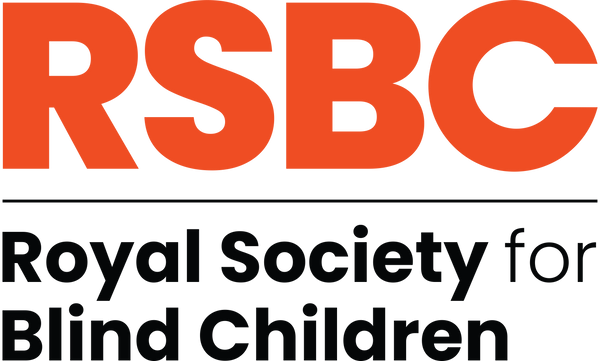
World Children’s Day 2025: My Day, My Rights
Share
Every child has the right to grow, learn, and thrive. But for too many children and young people with vision impairments, those rights are still something that have to be fought for.
World Children’s Day is about listening to children’s voices and acting so that they enjoy the rights they’re entitled to. This year’s theme is ‘My Day, My Rights’ - a reminder that every child’s experience matters, including blind and partially sighted children.
Yet, in the UK, equitable access to education, support, and community inclusion for children with vision impairment is far from a reality.
The right to independence: access to habilitation support
For many sighted children, independence develops naturally, such as walking to school, joining in games, or simply exploring their surroundings. For a child or young person who has a vision impairment, independence needs to be taught through habilitation: learning mobility skills, orientation, and daily living techniques that build confidence and safety.
But access to habilitation support isn’t easy. There are around 37,000 children and young people, yet there are only in the region of 150 habilitation specialists. Although some children have good provision, others receive little or none. Without this support, barriers to independence grow. It’s harder for children to participate fully at home, at school, and in their communities.
Children shouldn’t have to wait months, or even years, to receive the help that enables them to live independently. Access to habilitation is not a privilege - it’s a right.
The right to learn on equal terms
Education is the key to opportunity, but it’s rarely a level playing field for children with vision impairments. Access to Qualified Teachers of Vision Impairment (QTVIs) and specialist resources, from adapted learning materials to assistive technology, can make all the difference between inclusion and exclusion.
Yet families frequently report having to battle for this support. Some schools lack training or understanding of what reasonable adjustments look like, and accessible digital platforms, large print materials, braille, and tactile diagrams still aren’t consistently provided.
Every child has the right to an education that meets their needs. That means making sure the right expertise, resources and technology are in place. Parents shouldn’t have to fight before schools take action.
The right to belong: inclusion in the community
Inclusion doesn’t stop at the school gates. Too often, though, external environments and activities are inaccessible, or staff lack confidence in how to support a vision impaired child safely. Spaces can unintentionally exclude them, from poorly lit halls to unmarked steps and uneven flooring.
Inclusion isn’t simply about inviting children in. It’s about making sure they can fully take part through designing safe, accessible physical spaces, and making sure staff have the training required to welcome every child.
Blind and partially sighted children and young people have the right to participate in activities like youth clubs, sports, arts and social activities alongside their sighted peers.
The right to an accessible environment
Under the Equality Act 2010, schools and public spaces have a duty to make reasonable adjustments. That might mean highlighting steps and doorframes, providing contrasting handrails, or ensuring lighting is consistent. Small modifications make a world of difference, turning spaces from hazardous to navigable, from exclusive to inclusive.
When children can move confidently and safely, they gain not just independence, but dignity.
Listening to children, and acting on their rights
On World Children’s Day, it’s vital that we listen to the experiences of blind and partially sighted children and young people, and to the families who tirelessly advocate for them. They’re sending a clear message: “We don’t want special treatment, just equal access.”
Meeting the rights of vision impaired children shouldn’t depend on where they live, how loud their families can shout, or their local authority’s budget. Equity means ensuring that every child can reach their potential, by design.
A call for commitment
This World Children’s Day, RSBC is calling for:
· Every child and young person with a vision impairment to have access to habilitation and QTVI support.
· Reasonable adjustments being the norm, rather than the exception.
· Children’s voices to be listened to, building environments where they feel safe, valued and included.
Because every child deserves the right to say, “This is my day - and these are my rights.”
